Creatinine Clearance (CrC), and Glomerular Filtration Rate (GFR)
Creatinine Clearance (CrC)
What should be the sample for Creatinine Clearance (CrC)?
- 24 hours of urine and serum (clotted blood 3 to 5 ml) are collected.
- When starting urine collection, note the time and discard the first urine sample. When 24 hours are completed, empty the bladder’s last urine sample into the same container.
- Refrigerate the urine during collection or keep it on ice.
- Collect the blood in the middle of the urine collection.
- A 2-hour urine collection also correlates with a 24-hour urine collection.
- The 2-hour collection should preferably be done in the early morning fasting patient because, in the postprandial state, there is an increase in the blood creatinine and urine level (10% to 40%).
What are the precautions for Creatinine Clearance (CrC)?
- The patient should be hydrated, so there is more than 2 mL of urine output per minute.
- Avoid coffee, tea, and drugs during the test.
- Stop the medication (Drugs) like cortisone or ACTH treatment.
- Exercise increases creatinine levels.
- An incomplete collection of urine gives a false value.
- A meat-rich diet increases creatinine.
- Drugs. Like aminoglycosides, e.g., gentamicin, heavy metals, and nephrotoxic drugs increase the creatinine level.
- The test becomes less accurate when GFR falls below 10 mL/min.
- In the case of high plasma protein, creatinine secretion is increased, leading to a marked overestimation of GFR.
What are the Indications for Creatinine Clearance (CrC)?
- Creatinine clearance reflects the Kidney’s ability to excrete creatinine.
- Creatinine clearance is used to measure the kidney’s glomerular filtration rate (GFR).
- This test will give information on renal functions, such as:
- Obstruction of the kidney.
- Acute or chronic renal failure.
- Dysfunction due to other causes, like heart failure.
- In acute glomerulonephritis, it is used to follow the therapeutic response to the treatment.
- Creatinine clearance can be used to differentiate between glomerular disease and diffuse chronic structural changes.
- This is a good test to assess the overall renal functional damage.
What is the definition of Creatinine Clearance (CrC)?
- It is defined as the quantity of blood cleared of a substance per unit of time and depends on the substance’s plasma concentration and the kidney’s excretion rate, which reflects GFR and renal plasma flow.
- Creatinine clearance is a measure of the glomerular filtration rate.
- Urine and serum creatinine levels are measured, and the creatinine clearance rate is calculated.
- Creatinine clearance is defined as the volume of blood plasma cleared of creatinine per unit time.
- It is a rapid and cost-effective method to assess renal function.
What do you know about the pathophysiology of Creatinine Clearance (CrC)?
- Creatinine is a metabolic product of creatine-phosphate dephosphorylation in the muscles.
- Creatinine is a breakdown product of creatine phosphate, which has an important role in muscle contraction.
- Daily creatine and creatinine production depend upon muscle mass, which fluctuates very little. Most of the creatinine production is stable throughout the day.
- Creatinine is freely and mainly excreted by the kidney, so this will reflect the filtration power of the kidney.
- Excretion of creatinine by the kidney is a combination of glomerular filtration, which is 70% to 80%, and another fraction is by tubular secretion.
- Creatinine excretion by the kidney will depend upon the number of milliliters of filtrate (urine) per minute, called the glomerular filtration rate (GFR ).
- The filtrate will depend upon the amount of blood to be filtered.
- Further filtration will depend upon the ability of the glomeruli to act as a filter.
What is the relation of Creatinine clearance to GFR?
- Creatinine clearance is roughly equal to the glomerular filtration rate (GFR).
- Plasma creatinine of 15% to 20% is filtered, and the rest goes back to the systemic circulation and renal vein.
- Amount filtered = Amount excreted.
- GFR x Plasma creatinine = Urine creatinine x Urine volume
- The amount of blood to be filtered decreases in renal artery atherosclerosis, dehydration, and shock.
- The filtration ability of the glomeruli will be decreased in glomerulonephritis, acute tubular necrosis, and other primary renal diseases.
- If one kidney is knocked out, the other kidney is normal and can compensate for the filtration, ensuring the GFR remains within the normal limit.
- Creatinine clearance depends upon the following factors:
- Creatinine Clearance (CrC) decreases by 6.5 mL/min each decade because of a decrease in GFR.
- Urine collection is for 24 hours, so any error in the collection will give false results.
- Muscle mass varies among people and will also affect the CrC.
- Decreasing muscle mass will result in lower values.
- Ingestion of a large amount of meat for a time will increase the CrC.
What is the difference between Creatinine clearance (CrC) and GFR?
| Parameters | Creatinine clearance (CrC) | Glomerular filtration rate (GFR) |
|
|
|
|
|
|
|
|
|
|
|
|
|
|
|
|
|
|
|
|
|
Glomerular filtration rate (GFR)
What is the definition of GFR?
- GFR is defined as the number of milliliters of filtrate the kidneys make per minute.
- Normally, this amount is around 130 mL/minute and 180 liters per 24 hours.
- GFR depends upon the effective filtration pressure in the glomeruli and the renal blood flow rate.
- GFR is described as = mL/min/1.73 m2.
What is the average or estimated GFR?
| Age of the person | Average GFR = mL/min/1.73 m2 |
|
|
|
|
|
|
|
|
|
|
|
|
What is the Formula to calculate Creatinine clearance (CrC)?
- Urine volume X urine creatinine/plasma creatinine.
- Creatinine clearance = UV/P
- P = Serum creatinine in mg/dL
- V = Volume of urine in mL/minute.
- U = Number of mg/dL of creatinine excreted in the urine in 24 hours (reference Mosby’s manual of diagnostic and laboratory tests).
- Creatinine clearance = UV/P
- Creatine clearance uncorrected formula:
Creatinine clearance corrected formula:
- The corrected creatinine clearance formula may be simplified = Measured creatinine clearance x 1.73 / Patient’s surface area (sq m).
Example:
U = Urine creatinine in mg/dL (number of mg/dL of creatinine excreted in the urine in 24 hours).
V = Urine output in 24 hours (1440 minutes) (volume of urine in mL/minute).
P = Plasma or serum creatinine in mg/dL
A = Body surface area in square meters (1.73/A is a body surface area).
- There are various simplified formulas for the calculation of creatinine clearance.
The Cockcroft-Gault formula is simple and reliable:
What are the advantages of the Cockcroft-Gault formula?
- This formula reduces the variability of serum creatinine estimates of GFR due to increased muscle mass based on age and sex.
- It does not consider variations caused by extrarenal elimination and tubular secretions.
- It does not consider creatinine production by the muscle mass caused by disease.
- GFR in a person with relatively low muscle mass in relation to their body weight (obese, edema, or a chronically debilitated person).
- (Reference of Henery’s Clinical diagnosis and management by laboratory method).
Another reference calculation:
What is the Procedure for creatinine clearance?
2-Hour collection method:
- You can collect 2-hour samples of urine because the 24-hour collection is not as accurate as a 2-hour collection.
- For good urine outflow, give 500 ml of water 10 to 15 minutes before the start of the collection.
- Completely empty the bladder and discard this urine.
- When the patient feels full bladder, start a collection of urine for exactly 2 hours and empty the last sample into the container at the end of 2 hours.
- Also, check the serum creatinine level.
What are the interfering factors for Creatinine Clearance (CrC)?
- With increasing age, creatinine clearance also decreases because of a decrease in GFR.
- An incomplete collection of urine will give false values.
- Decreased muscle mass gives decreased values.
- Increased ingestion of meat will increase Creatinine clearance.
- Exercise may increase creatinine.
- Drugs like gentamicin, cimetidine, and cephalosporin may give rise to an increase in the level.
What is the normal value of Creatinine Clearance (CrC)?
Source 1
| Age | mL /min / 1.73 m2 | ||
| 0 to 1 year | 72 | ||
| one year | 45 | ||
| 2 year | 55 | ||
| 4 year | 71 | ||
| 5 year | 73 | ||
| 6 year | 64 | ||
| 7 year | 67 | ||
| 8 year | 72 | ||
| 9 year | 83 | ||
| 10 year | 89 | ||
| 11 year | 92 | ||
| 12 year | 109 | ||
| 13 to 14 years | 86 | ||
| Male | Female | ||
| 20 to 29 years | 94 to 140 | 72 to 110 | |
| 30 to 39 years | 59 to 137 | 71 to 121 | |
| After this age, with each decade, the Value Decreases ∼by 6.5 mL/min. |
- To convert to SI units x 0.00963 = Mean creatinine Clearance mL/s/m2.
Source 2
- Male = 97 to 137 ml/min.
- Female = 88 to 128 ml/min.
- Children =70 to 140 ml/ min.
- Newborn = 40 to 65 ml/min.
Source 6
Adult <40 years of age
- Male = 107 to 139 mL/min (1.78 to 2.32 ml/sec)
- Female = 87 to 107 mL/min (1.45 to 1.78 mL/sec)
- value decreases by 6.5 mL/min/decade of life after the age of 20 years with a decline in GFR.
Newborn = 40 to 65 mL/min
Another source
- Male = 85 to 125 mL/min
- Females = 75 to 115 mL/min
- Effect of the age:
- 50 to 75 years = subtract 5 mL for each 5-year interval.
- Over 75 years = subtract 8 mL for each 5-year interval.
What are the artifacts that lower the value?
- Incomplete urine collection.
- Presence of Ketones, Barbiturates.
- BSP, PSP, when the level is higher in the urine than in the plasma.
What are the causes of Increased values of creatinine clearance (CrC)?:
- This has no clinical significance; we suspect some errors in the collection procedure.
- Pregnancy
- Exercise.
- High cardiac output syndrome.
What are the causes of decreased values of creatinine clearance (CrC)?:
- It is a very sensitive indicator of decreased glomerular filtration rate when done with all precautions.
- Diseases of the kidney with impaired renal function.
- Congestive heart failure.
- Cirrhosis with ascites.
- Shock.
- Dehydration (loss of body fluids).
- Bladder outlet obstruction.
What are the drawbacks of creatinine clearance (CrC)?
- There are certain drawbacks to creatinine clearance.
- The reference limit is established for young adults, which is 90 to 120 mL/minute.
- GFR is found to decrease with age. There are references that the rate decreases by 4 ml/minute for each decade after the age of 20 years.
- Some studies found that creatinine clearance is as low as 50 mL/minute in clinically healthy elderly persons.
- Creatinine production and excretion also decrease with age, although serum creatinine is normal.
- There are several nonrenal factors affecting creatinine clearance.
- An accurate collection of urine is needed.
- Creatinine clearance is better than urea clearance and has replaced urea clearance.
- Creatinine comes from the muscles, so the individual’s muscle mass also affects the test.
- An old person with decreased muscle mass with chronic renal failure or malnourished persons can produce decreased creatinine clearance values.
- Dietary meat in abundant quantity may increase serum creatinine, decreasing creatinine clearance.
- Ketones in the blood may interfere with Jaffe’s biochemical estimation of creatinine.
- The major drawback is its nonspecificity when creatinine clearance decreases, making it difficult to differentiate the etiology of the abnormality.
What are the advantages of the creatinine clearance test (CrC)?:
- Creatinine clearance is still a better test than urea clearance.
- Creatinine clearance is reported as one of the most sensitive tests to detect renal failure.
Questions and answers:
Question 1: What is the alternative to 24-hour urine collection for Creatinine Clearance (CrC)?
Question 2: What is the difference between CrC and GFR?

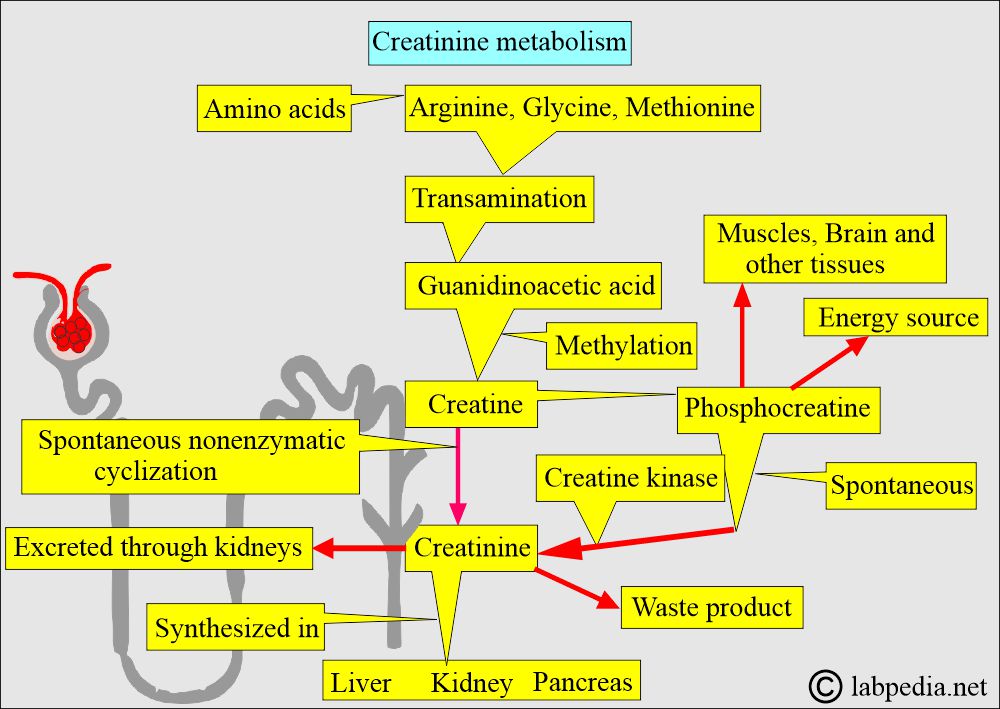
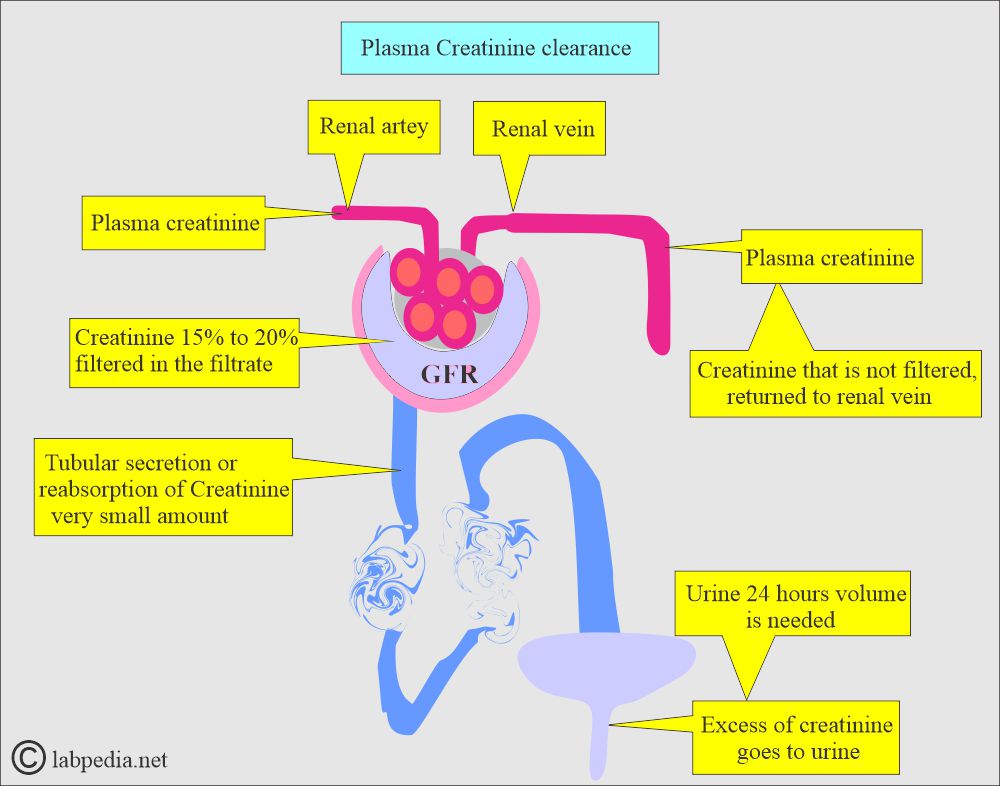
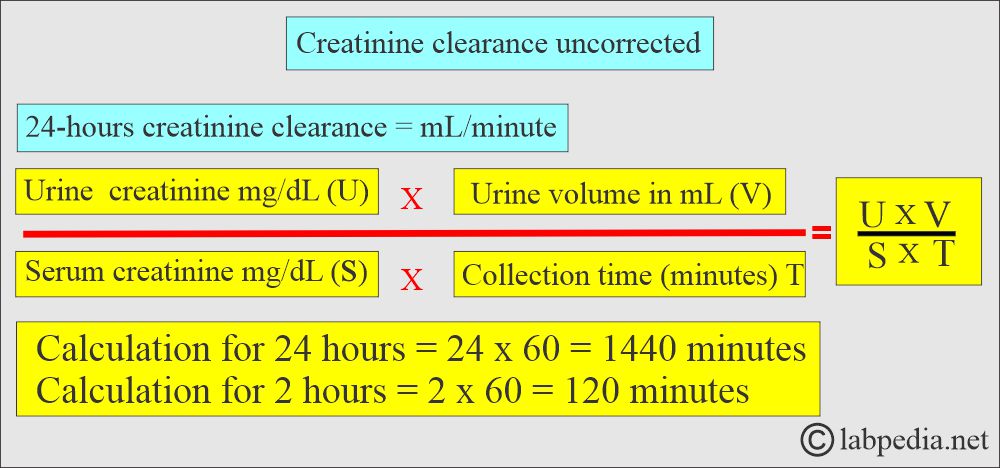
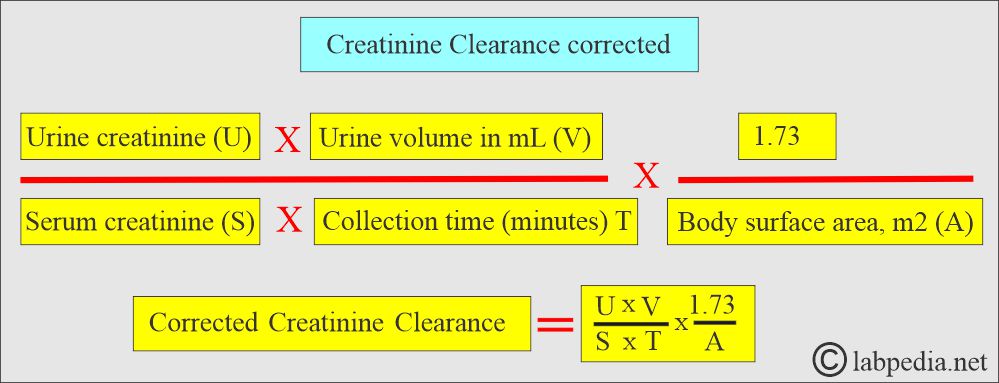
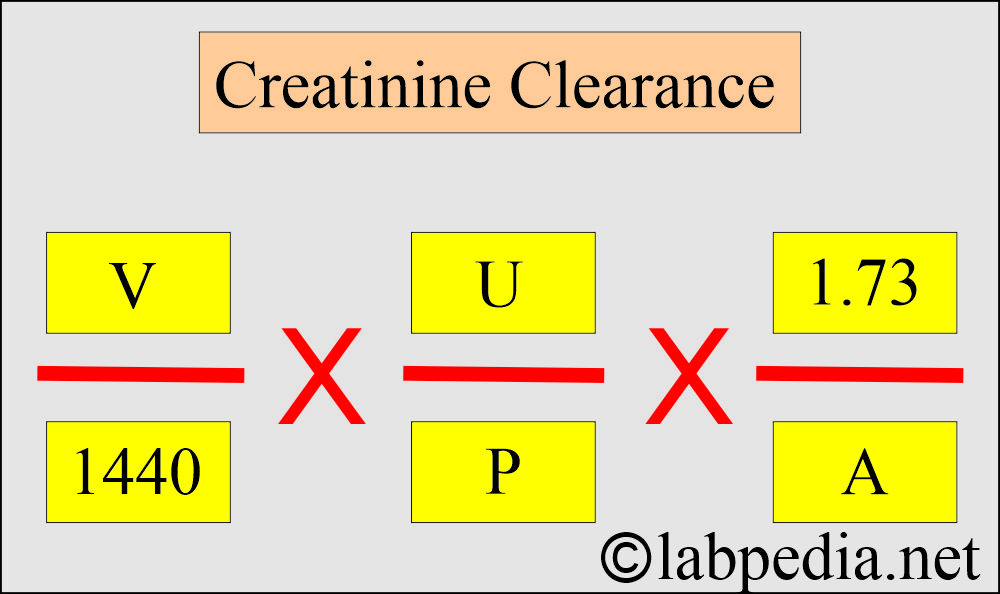
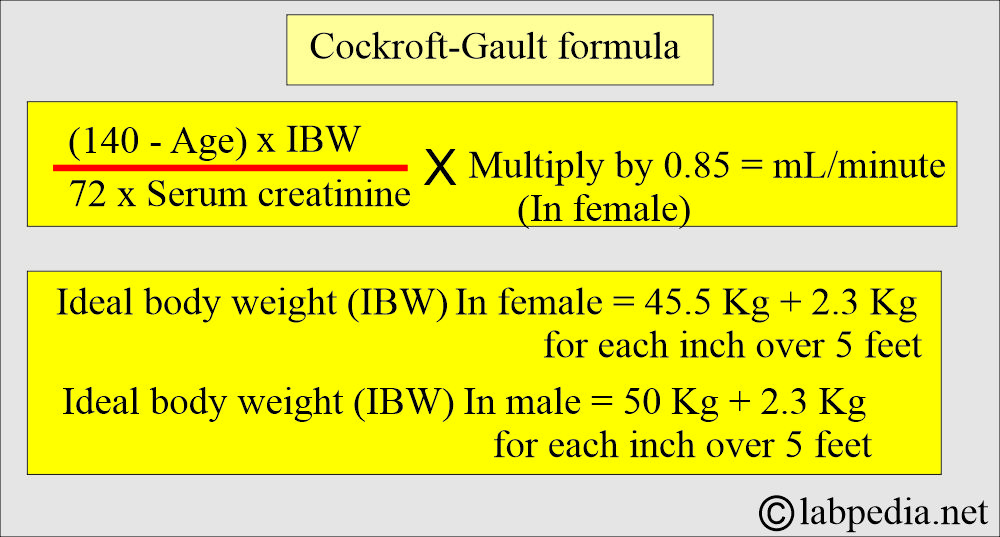
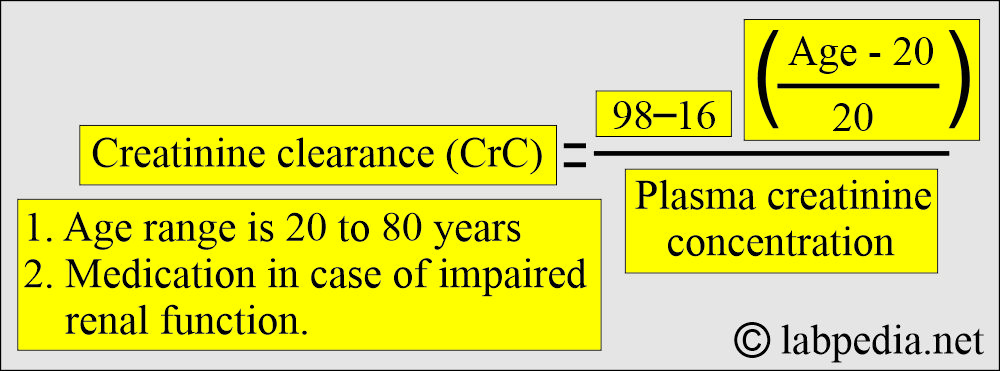
thankyou
welcome.
Thank for the knowledgeable study I’m interested in this page
Thanks.